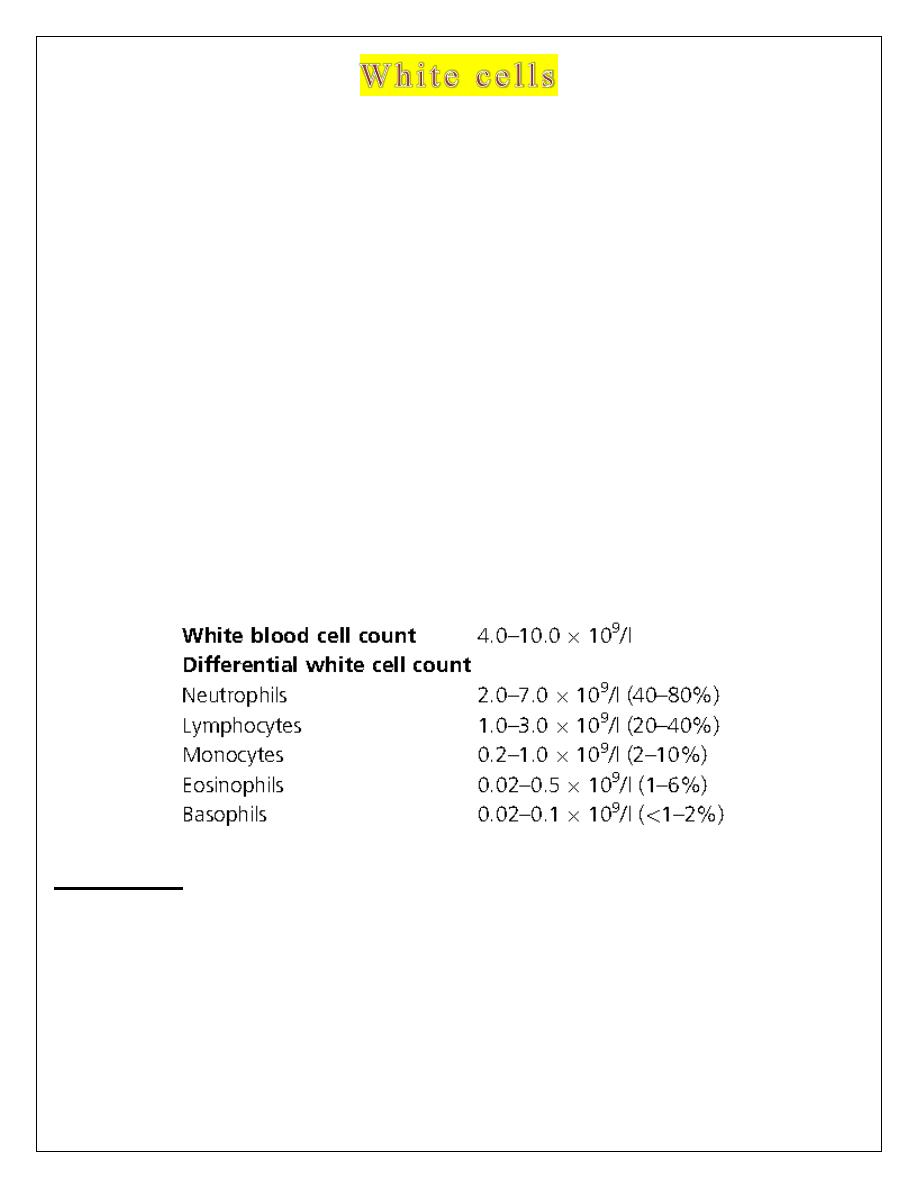
In healthy people there are at least five types of white cell or leucocyte in the circulating blood.
Unlike red cells, white cells have retained their nuclei. The cell is therefore made up of a
nucleus and cytoplasm.
White cells are divided into granulocytes (also known as
polymorphonuclear leucocytes) which include (
Neutrophil, Eosinophil, and Basophil) and
mononuclear cells which include (Lymphocyte & Monocyte). There are three types of
granulocyte and two types of mononuclear cell. The names are not very logical but they have
been in use for a long time and are generally accepted. Granulocytes are so named because their
cytoplasm contains prominent granules. However, monocytes also have granules and so do
some lymphocytes. The term polymorphonuclear leucocyte refers to the very variable nuclear
shape which is typical of granulocytes. The term mononuclear cell means that the cell has only
a single nucleus. Granulocytes together with monocytes comprise the phagocytes. Only mature
phagocytic cells and lymphocytes are found in normal peripheral blood. The lymphocytes, their
precursor cells and plasma cells, which make up the immunocyte population.
Neutrophils:
Neutrophils have a nucleus which stains purple and is divided into two to five segments or
lobes. The lobes are separated by a thin strand or filament of nuclear material.
The nuclear
chromatin is heterogeneous with some clumping. The cytoplasm of neutrophils is very pale blue
and is packed with granules. Neutrophils are produced in the bone marrow.
The major function
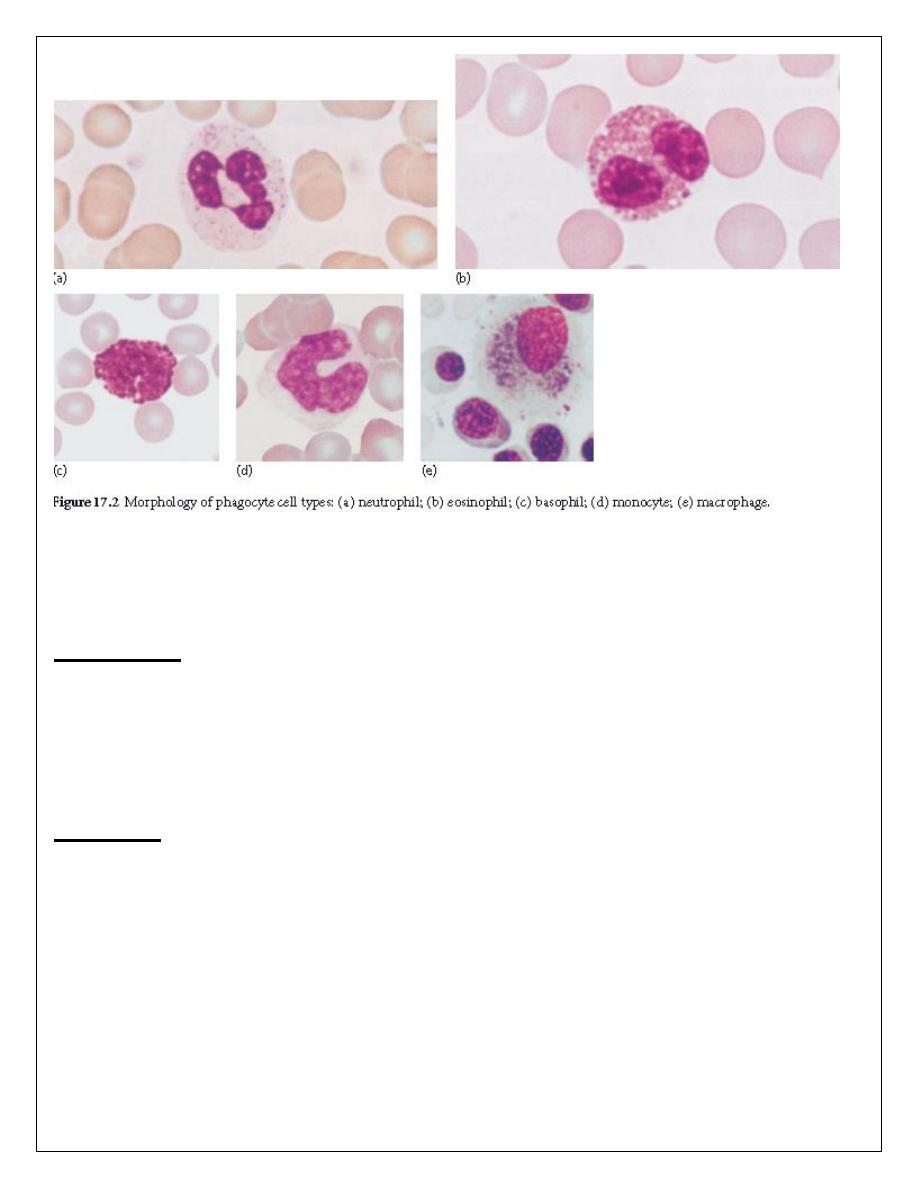
of neutrophils is attracted to sites of infection by a process known as chemotaxis; ingests micro-
organisms (a process known as phagocytosis) and destroys them.
Eosinophils:
Eosinophils have a nucleus that is usually bilobed and pale blue cytoplasm, which is packed
with large refractile, orange–red granules. The major function is the same functions as the
neutrophil; in addition, helps control parasitic infections; has a role in allergic responses.
Basophils:
Basophils have a lobulated nucleus, which is often obscured by the large purple-staining
granules which pack the very pale blue cytoplasm.
Basophils are produced in the bone marrow
and circulate in the blood in small numbers before migrating to tissue. They have a role in
immediate hypersensitivity reactions, allergic and inflammatory responses and in the control of
parasitic infections.

Lymphocytes:
Lymphocytes are the second most numerous circulating white cells after neutrophils. They are
smaller than granulocytes with a round or somewhat irregular outline and pale blue, clear
cytoplasm.
Lymphocytes are produced from lymphoid stem cells in the bone marrow and
probably the thymus. Their function is in tissues such as lymph nodes, spleen, tonsils and the
lymphoid tissue associated with mucous membranes. They circulate in the blood stream, enter
lymphoid tissues and emerge again from lymphoid tissues into lymphatic channels, where they
form one constituent of a clear fluid known as lymph. Lymphatics drain into the thoracic duct
and ultimately into the blood stream. This process of continuing movement between tissues and
the blood stream is known as lymphocyte recirculation. Lymphocytes function in the body’s
immune responses. They are divided into three functional types: B cells, T cells and natural
killer (NK) cells. B cells differentiate in tissues into plasma cells, which secrete antibodies,
thereby providing humoral immunity. T lymphocyte attacks cells bearing foreign antigens and
antibody-coated cells; can help or suppress B cells (part of cell-mediated immunity). Natural
killer lymphocyte (NK cell) attacks foreign cells and tumour cells (part of cell mediated
immunity) T cells cannot be distinguished morphologically from B cells.
Monocytes:
Monocytes are the largest normal blood cells. They have lobulated nuclei and voluminous
cytoplasm which is greyish- blue, is sometimes opaque and may be vacuolated or contain fine
azurophilic granules. They function mainly in tissues where they differentiate into long-lived
macrophages (sometimes called histiocytes). Monocytes and macrophages respond to
chemotactic stimuli and are phagocytic. They are part of the body’s defences against bacterial
and fungal infections and also ingest and break down dead and damaged body cells. They
present antigen to lymphocytes.
They secrete chemical messengers, known as cytokines, which
influence the behaviour of other body cells, including blood cells and their precursors.
Monocytes differentiate not only into macrophages but also into various specialized cells,
specific to different organs, such as the Kupffer cells of the liver and the microglial cells of the
brain.
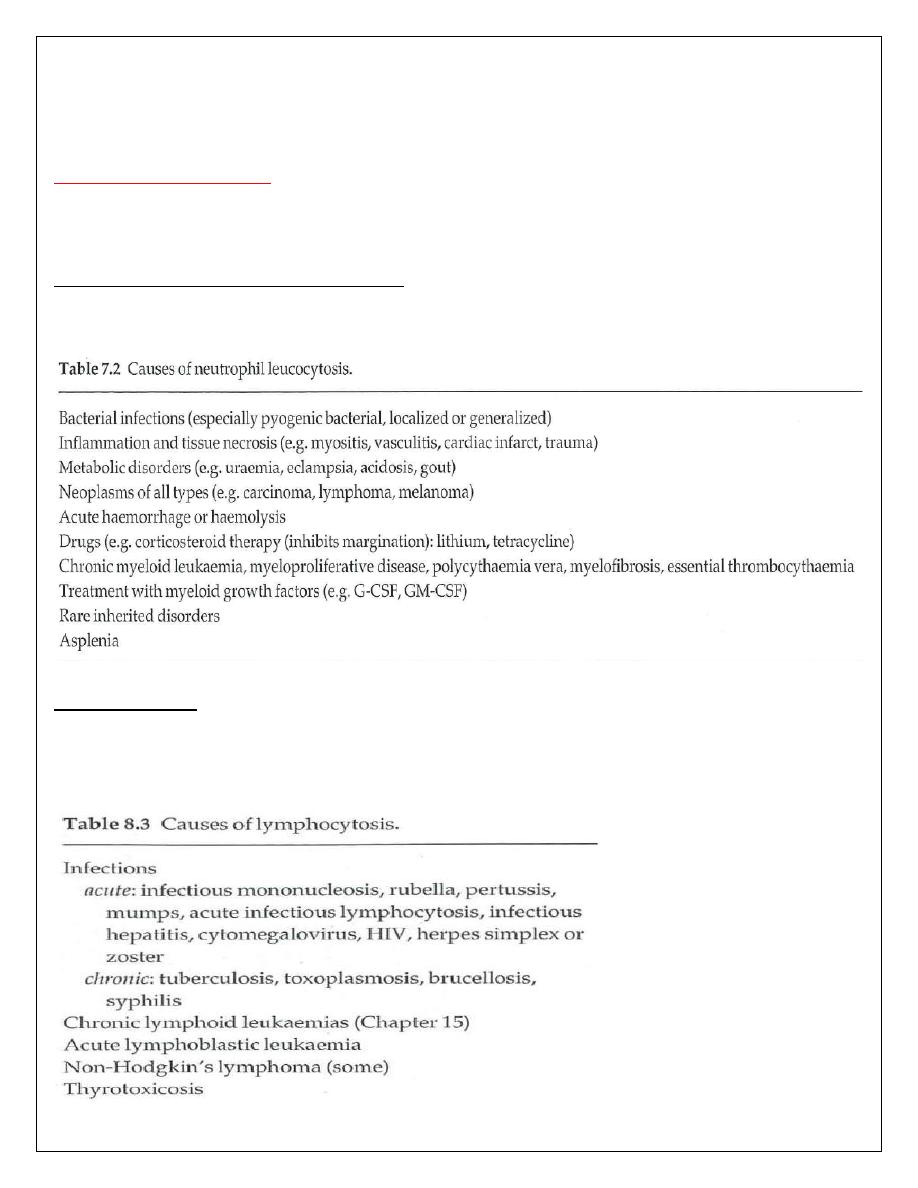
WHITE BLOOD CELLS DISORDERS
The disorders of white blood cells divided into: neoplastic and non-neoplastic
Non neoplastic disorders:
Leucocytosis: increase WBCs above its normal range.
Neutrophil leucocytosis (Neutrophilia): An increase in circulating neutrophils to levels
greater than 7.5 x 10
9
/L is one of the most frequently observed blood count changes.
Lymphocytosis:
Lymphocytosis often occurs in infants and young children in response to infections that produce
a neutrophil reaction in adults.
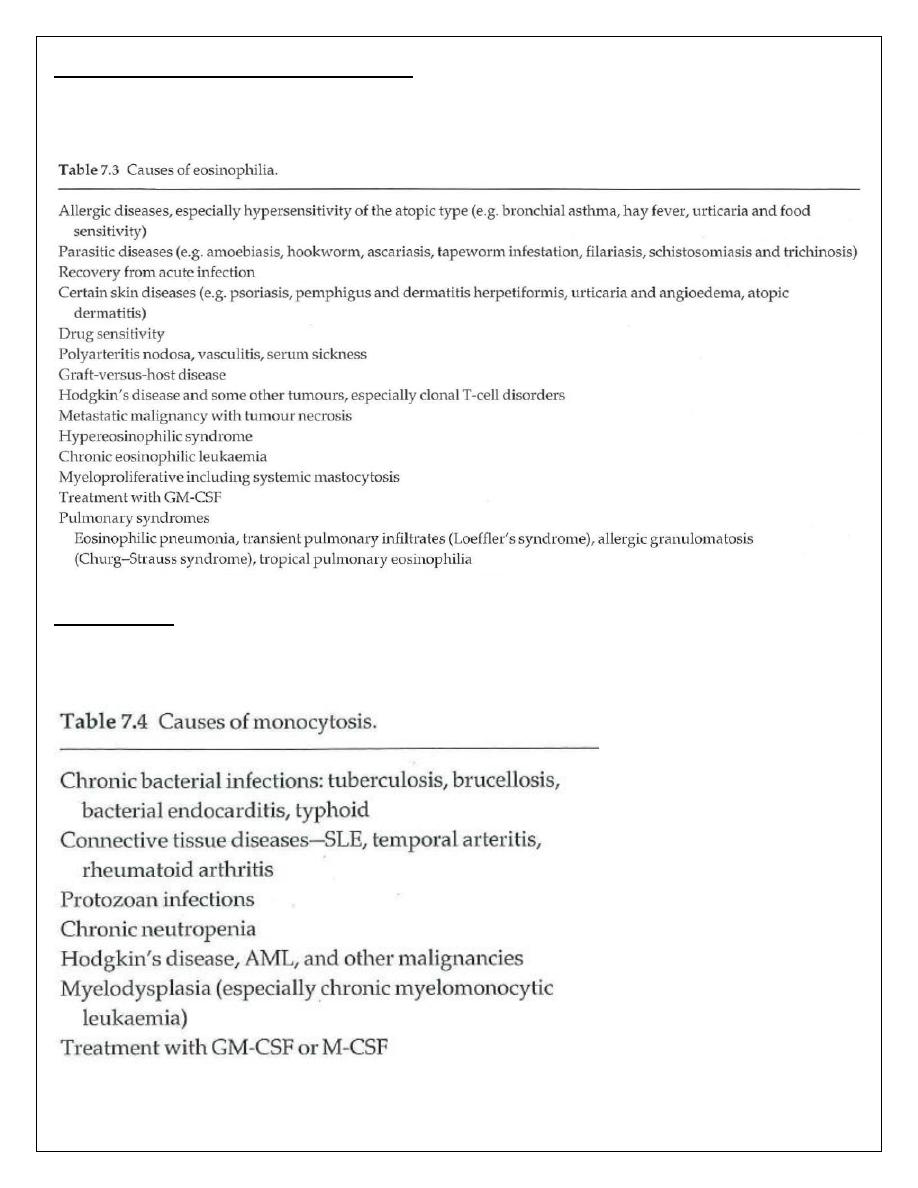
Eosinophilic leucocytosis (eosinophilia):
The causes of an increase in blood eosinophils above 0.5 x 10
9
/L.
Monocytosis:
A rise in blood monocyte count above 0.8 x 10
9
/L is infrequent.
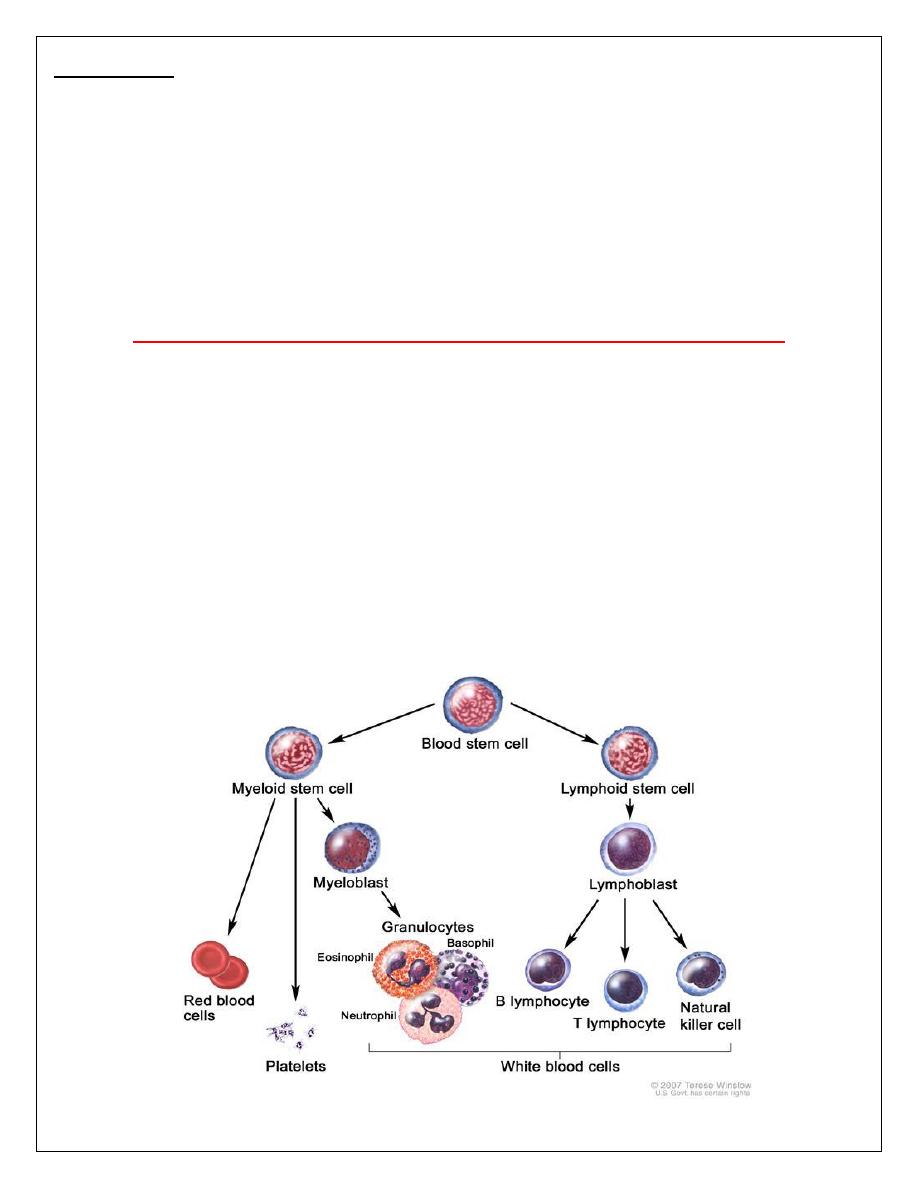
Neutropenia:
The lower limit of the normal neutrophil count is 2 x 10
9
/L. When the absolute neutrophil level
falls below 0.5 x 10
9
/L the patient is likely to have recurrent infections and when the
count falls to less than 0.2 x 10
9
/L the risks are very serious, particularly if there is also a
functional defect. Neutropenia may be selective due to many causes or part of a general
pancytopenia.
Neoplastic disorders (HEMATOLOGICAL MALIGNANCIES)
The hematological malignancies are a diverse group of malignant conditions arising from cells
of the blood forming organs.
When looking at a classification of these malignancies it is helpful to make a distinction
between the lymphomas on the one hand which have their origin in lymphoid tissues with late
spread to the bone marrow and those malignancies which originate from the bone marrow
precursors.

Malignancies and pre-malignant conditions originating from bone marrow precursor
cells:
1. Acute leukemia (AML, ALL)
2. Chronic leukemia (CML, CLL)
3. Myelodysplastic syndromes MDS (Potential to transform to acute leukemia)
4. Myeloproliferative disorders MPD (CML, PRV, Myelofibrosis, Essential thrombocythemia).
5. Plasma cell disorders (multiple myeloma & others).
The aetiology of hemopoietic malignancy:
1. Inherited factors (Genetics): The incidence of leukaemia is greatly increased in some
genetic diseases, particularly Down's syndrome (where acute leukaemia occurs with a 20-
30 fold increased frequency), Bloom's syndrome, Fanconi's anaemia & others .
2. Environmental influences:
Drugs (alkylating agents).
Chemicals (Chronic exposure to benzene).
Radiation (TBI).
Viruses: EBV (Burkitt’s lymphoma), HTLV-1 (ATLL).
LEUKEMIA
The leukemias are a group of disorders characterized by the accumulation of malignant white
cells in the bone marrow and blood. These abnormal cells cause symptoms because of: (i) bone
marrow failure (i.e. anaemia, neutropenia, and thrombocytopenia) and (ii) infiltration of organs
(e.g. liver, spleen, lymph nodes, meninges, brain, skin or testes).
Classification:
The main classification is into four types: acute and chronic leukaemia, which are further
subdivided into lymphoid or myeloid.
Hematological neoplasms can be divided into acute and chronic types based on two
characteristics: survival and maturation.
Survival:
• Acute: Survival measured in weeks or a few months (without effective therapy)
• Chronic: Survival measured in years

Maturation:
• Acute: Predominance of immature cells (blasts)
• Chronic: Predominance of mature cells
ACUTE LEUKEMIA
is a clonal (that is, derived from a single cell) malignant disorder, it’s usually aggressive
diseases in which malignant transformation occurs in the hemopoietic stem cell or early
progenitors. Genetic damage is believed to involve several key biochemical steps resulting in:
(i) an increased rate of proliferation; (ii) reduced apoptosis and (iii) a block in cellular
differentiation. Together these events cause accumulation of the early bone marrow
hemopoietic cells which are known as blast cells. The dominant clinical feature of these
diseases is usually bone marrow failure caused by accumulation of blast cells although organ
infiltration also occurs. Acute leukaemia is defined as the presence of over 20% of blast cells in
the blood or bone marrow at clinical presentation. It can be diagnosed with even less than 20%
blasts if specific leukaemia-associated cytogenetic or molecular genetic abnormalities are
present.
Acute leukemia is subdivided into Acute Lymphoblastic leukemia (ALL), accumulation of
lymphoblast (immature lymphocytes) in the bone marrow and is the most common malignancy
of childhood and Acute Myeloid leukemia (AML), which involves the myeloid lineages (that
is, cells from which neutrophils, eosinophils, monocytes, basophils, megakaryocytes originate )
,
occurs in all age groups. It is the common form of acute leukaemia in adults and is increasingly
common with age.
The distinction between the two leukemias is based on morphological, cytochemical,
immunological and cytogenetic differences and is of paramount importance as the treatment and
prognosis are usually different. On the basis of surface antigen expression, ALL is divided into
T cell lineage and B cell lineage.
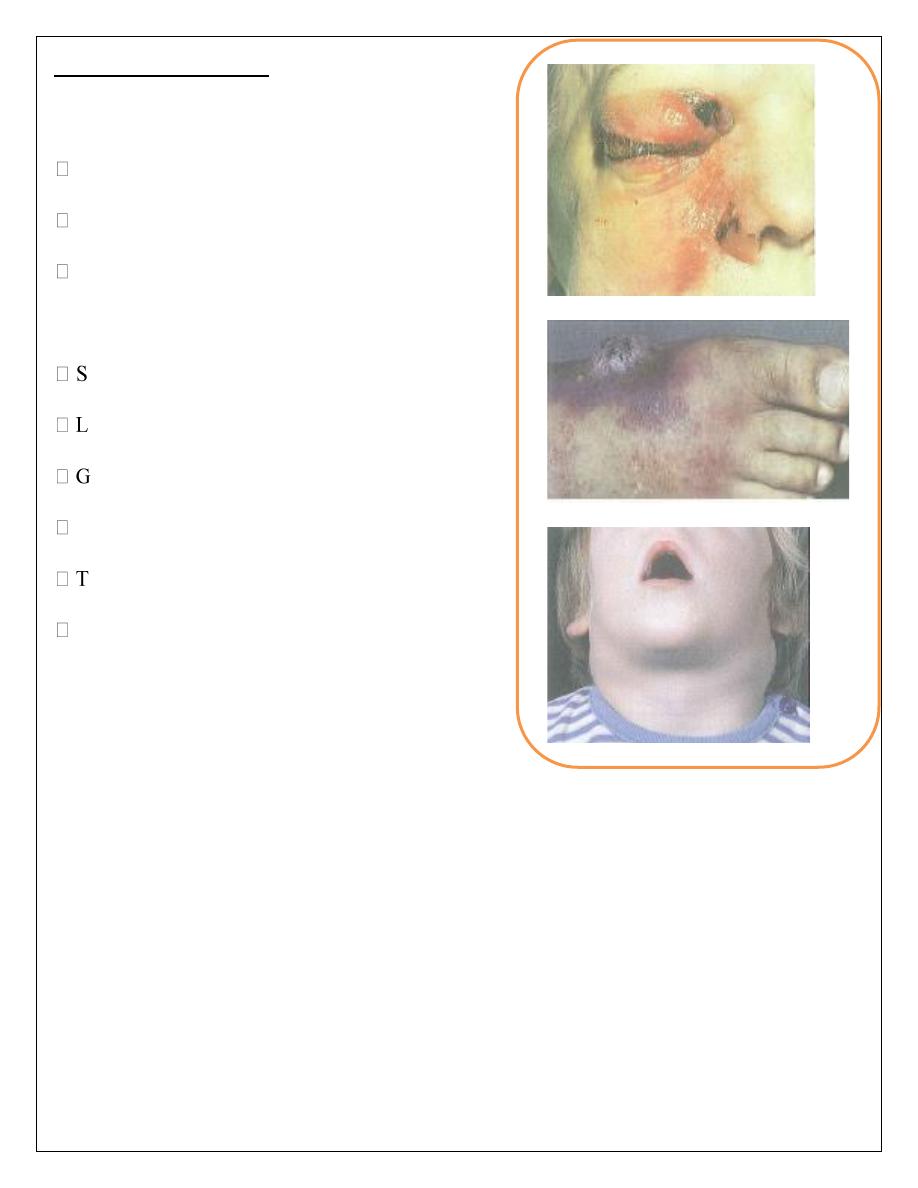
CLINICAL FEATURES:
Due to marrow infiltration
anemia (malaise)
thrombocytopenia (bleeding)
neutropenia with a high risk of infections (fever)
Due to tissue infiltration
plenomegaly: not a very big spleen
ymphadenopathy - particularly in ALL
um hypertrophy and skin infiltration.
CNS disease: more common in ALL
esticular involvement - may occur in ALL
Bone pain: often the presenting feature in ALL
Investigations
Haematological investigations may reveal a normochromic, normocytic anaemia with
thrombocytopenia in most cases. The total white cell count may be decreased, normal or
increased to 200 x 10
9
/L or more. Blood film examination typically shows a variable numbers
of blast cells. The bone marrow is hypercellular with >20% leukemic blasts & marked decrease
in normal hematopoietic precursors of all types. The blast cells are characterized by
morphology, cytochemistery ((special stain as sudan black B SBB )), immunological tests
((Immunophenotyping of the antigens present on blasts isolated from the bone marrow or
peripheral blood is the most reliable method of determining whether the leukemia is lymphoid
or myeloid)) and cytogenetic analysis ((for example, the Philadelphia chromosome, which is the
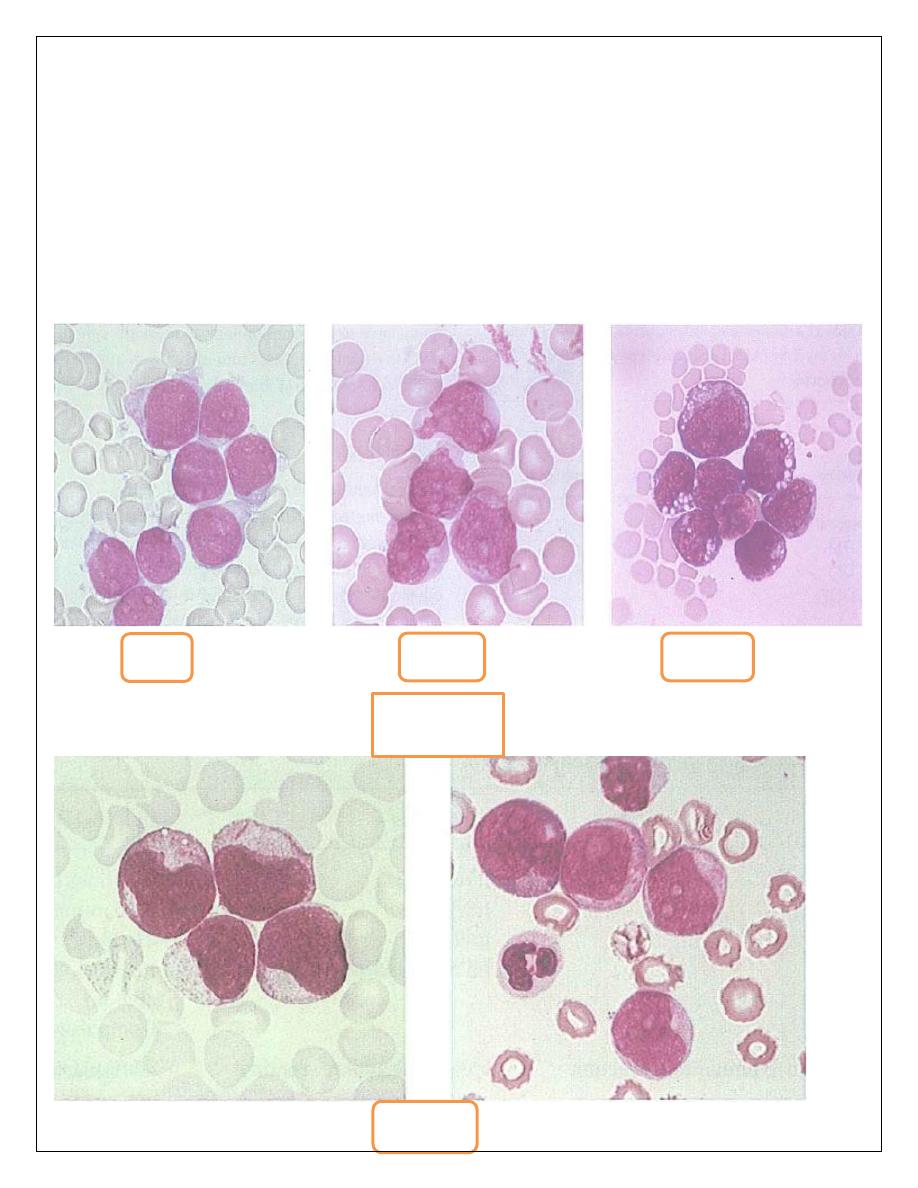
product of a translocation between chromosomes 9 and 22, the presence of which confers a very
poor prognosis in cases of ALL)). Lumbar puncture for cerebrospinal fluid examination should
be performed.
Biochemical tests may reveal a raised serum uric acid, serum lactate
dehydrogenase or, less commonly, hypercalcemia. Liver and renal function tests are performed
as a baseline before treatment begins. Radiography may reveal lytic bone lesions and a
mediastinal mass caused by enlargement of the thymus and/or mediastinal lymph nodes
characteristic of T-ALL. Tests for DIC are often positive in patients with AML-M3.
L1
L2
L3
ALL
AML
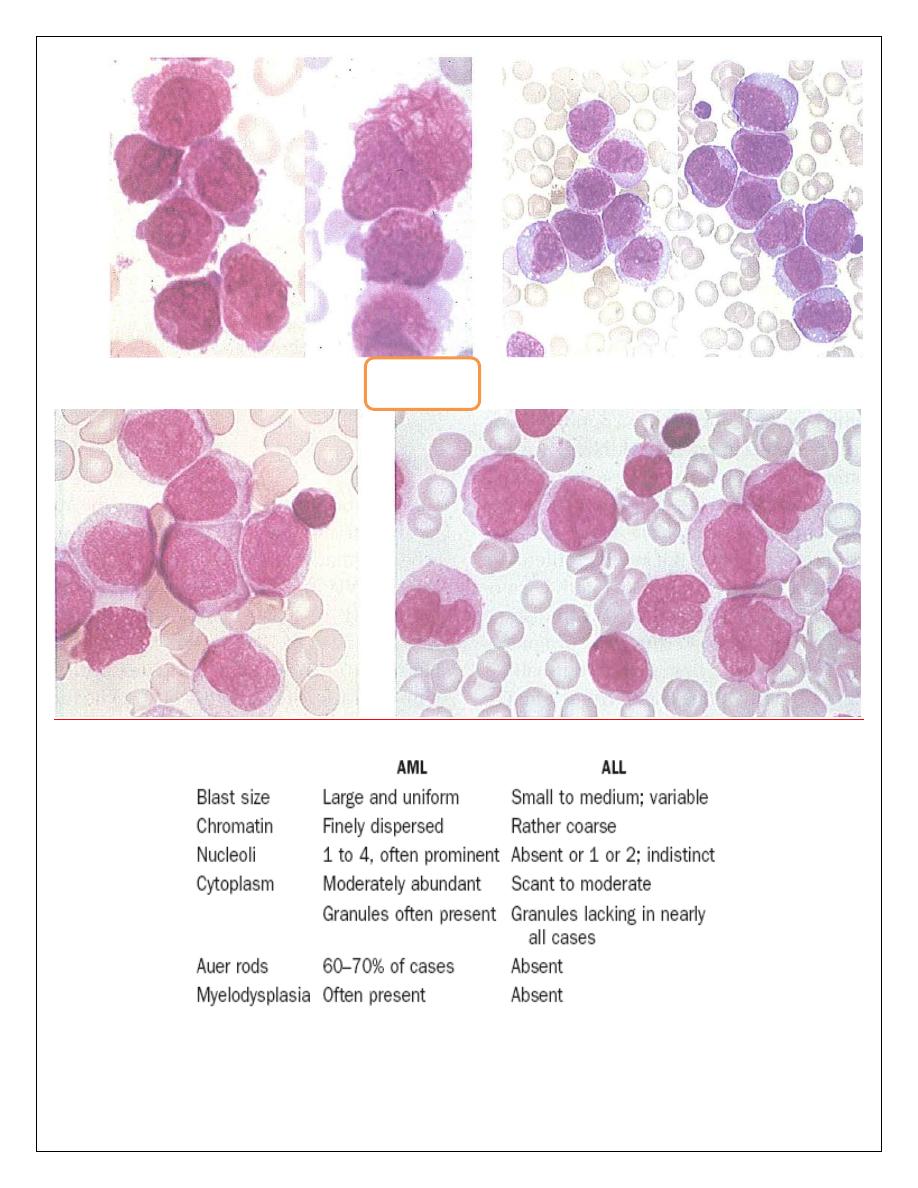
Dr. Ali Obeid Ibrahim Al-Khafajy
AML
